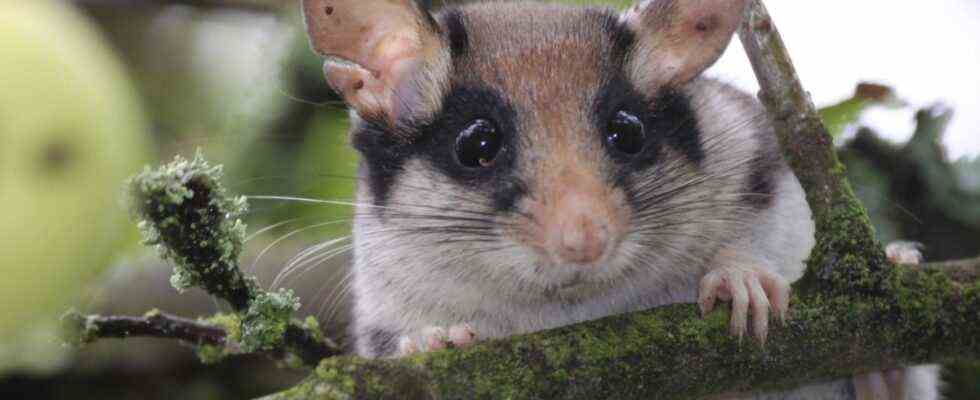The times are not yet far off when there have been so many garden sleepers that the rodents have been considered a real nuisance in some regions. At least that’s what Uwe Friedel, biologist and species protection officer at the Bund Naturschutz (BN) reports. “Garden owners in particular have often ruthlessly pursued the small animals because they were so common,” says Friedel. “Once there, the rodents even paralyzed the ZDF broadcasting building in Mainz because they had eaten the cables.” The times are long gone. The State Office for the Environment (LfU), which is responsible for recording biodiversity in Bavaria, classifies the garden dormouse as critically endangered on its red list. Many Bavarian deposits are extinct, as research by the BN has now shown. Friedel fears that the garden dormouse could have completely disappeared from Bavaria in just a few years.
Contrary to what their name suggests, garden dormice live mainly in species-rich and original deciduous and coniferous forests in the low mountain ranges, but also up into the high mountains. Some time ago someone fell into a photo trap in the Allgäu Alps at an altitude of 1,600 meters, which researchers had set up there to record small mammals. Garden dormice, which can be recognized very well by the distinctive black “Zorro masks” around their eyes, belong to the dormouse like dormice, dormouse and the also very rare tree dormouse. From a purely visual point of view, they are reminiscent of mice with their large eyes and small ears. They are genetically related to the squirrels. The hallmark of the dormouse is their noticeably long, bushy tail, which is almost as long as their body.
Garden dormouse or Eliomys quercinus, as the scientific name of the species is, can grow up to 17 centimeters, they have a red-brown to gray fur, their flanks and the underside of the body are white. The rodents are nocturnal. During the day they rest in tree hollows, nest boxes and sometimes bushes. As omnivores, they are after insects, worms, snails, small vertebrates and bird eggs. But they also feed on fruits, seeds and buds. And they even eat Roman snails and large slugs that other animals leave behind. The breeding season is May to July, the females usually give birth to four to six young. The rodents hibernate from October to April. Germany and thus Bavaria have a special responsibility for the species. Because up to now around ten percent of the world’s population lived here. The rodents are therefore classified as a “national type of responsibility”.
The occurrence is determined with paw prints
In the past three years, numerous volunteers from the BN have searched the previous areas of distribution of the garden dormouse for the rodents. Not only game cameras and special nesting boxes were used. But also so-called track tunnels. These are simple tubes or rectangular boxes made of wood or sturdy cardboard, open at the front and back, with an ink pad and strips of paper inside. They are often used to detect mice, hedgehogs, weasels or even dormice. To do this, the containers are placed on the ground in the wild or attached to branches up to a height of around two meters. When animals run over the ink pad, they leave paw prints on the strips of paper, which can be used to determine the respective occurrences.
The results of the project so far are very sobering. Throughout Bavaria, only 244 reports from garden dormice have been received by the BN since 2019, 162 of which were unambiguous or have been confirmed as such by experts. “After that, we only have larger stocks in the Fichtel Mountains and in the Franconian Forest,” says Friedel. “There are still small deposits in the Steinwald in the Upper Palatinate, in the Bavarian Forest and in the Miltenberg district.” The Miltenberg population is limited to two vineyards, according to Friedel it is an isolated residual population that is doomed without any auxiliary measures.
So far, there has been uncertainty about the causes of the dramatic decline. “One possibility is that there are fewer and fewer original deciduous and coniferous forests, which means that the habitat of the garden dormouse is shrinking significantly,” says Friedel. Another could be the climate crisis and the dormouse. “There are indications that the dormouse is benefiting from global warming and is therefore displacing the garden dormouse more and more,” says the biologist. The dormouse or glis glis is also one of the dormouse. Unlike the garden dormouse, it is classified as frequent and in no way endangered on the LfU’s Red List.

